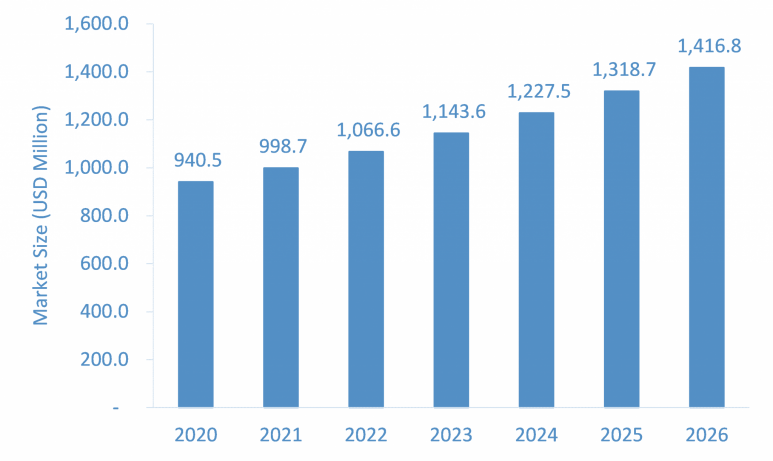Nebulizer Devices Market Growth Offers Room to Grow to Existing & Emerging Players

SEP 01,2021/IndustryNewsGlobal/ The unexpected shifts in the global markets because of the sudden outbreak of the COVID-19 virus have brought many major and minor tremors to industries of all sizes including the Nebulizer Devices Market.
The Nebulizer Devices Market is projected to grow from USD 940.5 million in 2020 to USD 1,430.2 million by 2026 at a CAGR of over 7.2% during the forecast period.
Nebulizers are respiratory drug delivery therapeutic device that helps to transform the liquid drug into aerosols or mist and delivers it directly to lungs. The technique of nebulization is commonly used for the treatment of respiratory diseases such as cystic fibrosis, asthma, and chronic obstructive pulmonary disease (COPD). These devices are electrically powered and rechargeable. Nebulizers are specifically used for the delivery of liquid medication to breathing passage, thus reduce the bulging of the mucous membrane caused by pollutants.
Market Dynamics
A rise in environmental pollution and a surge in the number of smokers propel the need for nebulizer devices.
- The rising of chronic respiratory diseases, the growing geriatric population, and increasing demand for home-based healthcare devices are some of the factors boosting the nebulizer devices market growth.
- Also, increasing consumption of tobacco, alcohol, and ultra-processed products such as sugar-sweetened beverages is one of the prime causes behind the rising prevalence of respiratory diseases especially in North America.
- Furthermore, according to WHO, there were around 3.2 million deaths across the globe due to COPD.
Segment Analysis
Type Trends
Based on type, the global nebulizer devices market has been categorized into jet, ultrasound, and mesh.
- Under these, the mesh segment held a considerable market share in 2020 and is likely to grow at the fastest CAGR during the forecast period.
- This is mainly attributed to the technologically advanced compact size devices and minimized drug loss, thus enhancing the effectiveness of the nebulizer devices.
- Other factors such as portability, quick treatment, increased patient acceptance, and convenience bolsters the market expansion.
Regional Trends
By region, the North American market garnered the highest market share of almost 38% in 2020 and is projected to grow at a steady CAGR during the assessment period.
This is mainly attributed to the rising respiratory disorders, well-established healthcare infrastructure, rise in customer awareness, and government initiatives such as favorable reimbursement scenario, further accelerates the regional market growth.
Key Players:
- Agilent Technologies, Inc. (The U.S),
- Allied Healthcare Products, Inc. (The U.S),
- CareFusion Corporation (The U.S),
- Covidien plc (Ireland),
- GE Healthcare (The U.S),
- GF Health Products Inc. (The U.S),
- Omron Healthcare, Inc. (Japan),
- PARI GmbH (Germany),
- Koninklijke Philips N.V. (Netherlands), and
- Briggs Healthcare (The U.S).
Features of the Report
This report offers high-quality insights and is the outcome of detailed research methodology comprising extensive secondary research, rigorous primary interviews with industry stakeholders and validation and triangulation with Stratview Research’s internal database and statistical tools.
The Nebulizer Devices Market analysis report discusses the following heads in great detail:
- Market structure: Overview, industry life cycle analysis, supply chain analysis
- COVID-19 Impact Assessment
- Market environment analysis: Growth drivers and constraints, Porter’s five forces analysis, SWOT analysis
- Market trend and forecast analysis
- Market segment trend and forecast
- Competitive landscape and dynamics: Market share, product portfolio, product launches, etc.
- Attractive market segments and associated growth opportunities
- Emerging trends
- Strategic growth opportunities for the existing and new players
- Key success factors